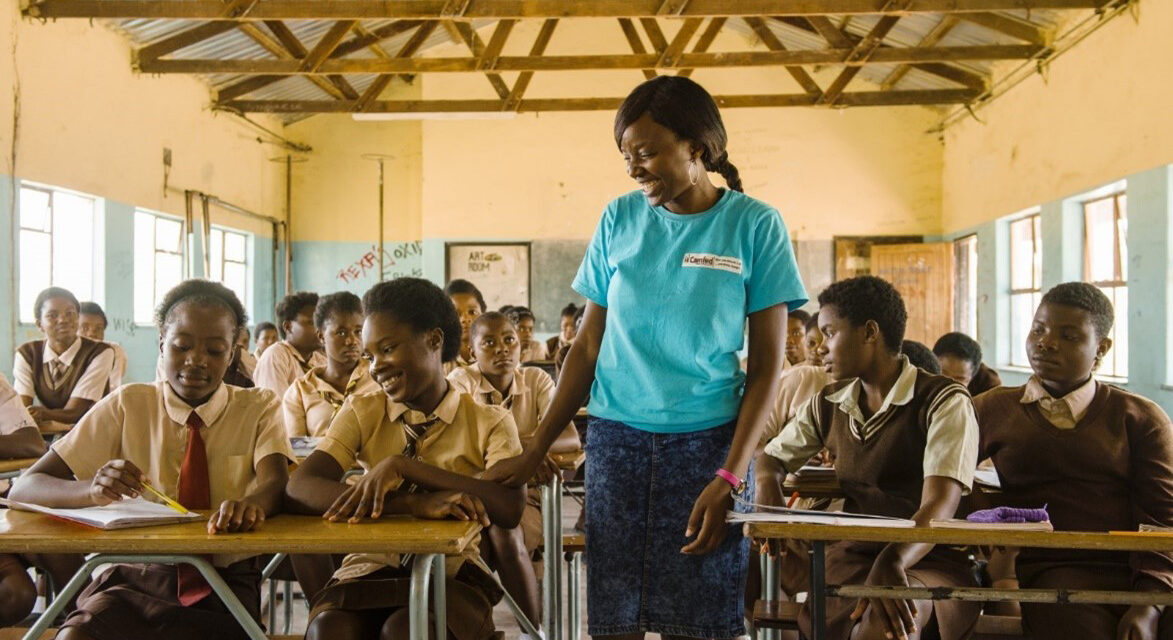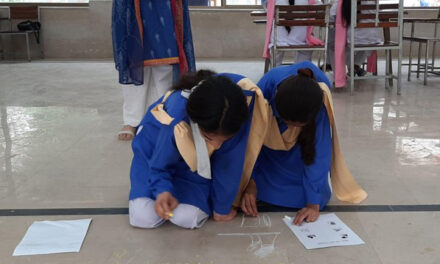In this Education for Climate Justice blog series, we bring you new research, case studies and examples of education for climate action from across the globe. We aim to provoke discussion and encourage learning and collaborations that promote environmental and social justice through new models and practices of education. This series is supported by JustEd at the University of Bath.
This blog was written by Alice Saisha and Catherine Boyce from CAMFED and Fernanda Gándara from Room to Read.
In this fourth instalment of our blog series, we hear from two more initiatives – one based in Zambia and Zimbabwe with CAMFED and another just beginning in Nepal and Vietnam with Room to Read.
At CAMFED, we believe that climate justice in education requires that we acknowledge and respond to the injustices associated with gender, geography, poverty, youth, disability and other characteristics linked to marginalisation; in a way that is uplifting and empowering – because all young people deserve a future full of hope.
Young people in rural Africa produce minimal carbon emissions, yet are on the frontline of the crisis. Their experiences of the climate crisis in their daily lives include flooding, damage to their schools, reduced productivity of smallholder plots and hunger, which affects their ability to learn. Girls, in particular, have less time to study as they walk further to collect scarce water and firewood for their households. They face escalating pressures of being withdrawn from school and pushed into early marriage as household finances are put under even greater stress (see CAMFED’s climate education needs assessment).
Over the past year, CAMFED has brought together young people, especially marginalised girls and young women, government education partners and technical advisors to co-develop a new approach for climate education in schools in Zambia and Zimbabwe. Our Climate Education Handbook is a resource that female peer mentors will use to deliver uplifting and interactive climate education sessions with children in secondary schools. Content is localised to the needs of young people in each country and prioritises components of climate education – justice, resilience, agency and green careers – that complement what is covered through the formal curriculum in Geography, Science and Agriculture classes. Our approach has climate justice at its heart.
At the core of CAMFED’s approach is the recognition that with education and opportunity young people have the power to change the world for the better. We see this every day, not least with the 14,000 young African women who volunteered as Learner Guides in 2022 to help children – especially marginalised girls – to learn and thrive in school. In 2022 alone, Learner Guides supported over 939,000 children.
The CAMFED Association of leaders is comprised of young African women from marginalised backgrounds (about 250,000 individuals) who have been educated with CAMFED support (including co-author Alice Saisha). These women led the needs assessment and content development for the Climate Education Handbook. They will also lead the delivery of these materials in their local schools, reaching millions of children, in rural Africa. Their impact as role models and “big sisters” is both uplifting and grounded in their context.
Both how we developed the resources and what we developed is powered by the following principles:
- Inclusive – marginalised young women lead both design and delivery of climate education; and encourage children to be inclusive through their own climate leadership.
- Relevant – ensuring that both development and content are localised and therefore meaningful for children in Zimbabwe and Zambia. That includes addressing the urgent need for information about how to stay safer in an extreme weather event, and showcasing Indigenous techniques for adaptation and resilience.
- Uplifting, empowering and inspirational – rather than burdening young people with eco-anxiety or responsibility to fix the problem, we focus on what young people can do as climate champions in their families, schools and communities and opportunities for aspirational green jobs. That includes green careers in agriculture, the backbone of rural Africa’s economy.
- Recognising and explaining the structural inequalities that sit behind climate injustice, while inspiring young people to know they can make a difference and that they are part of a global youth movement for climate justice. Learning is fun and interactive.
Alongside delivering climate-smart education in schools, we partner with stakeholders in Africa and beyond for more equitable education systems, and to raise awareness of the urgent need for resources for climate-smart education systems, especially in low-income countries.
A second initiative to keep an eye on is Room to Read’s new and innovative Girls’ Education and Gender Equality (GEP) programme. The GEP programme establishes climate justice clubs which aim to transform gender dynamics by increasing participants’ knowledge about climate and gender justice, and supporting them to feel more confident and engaged in their ability to make a difference in relation to climate change and gender justice.
The climate justice clubs are designed to address the detrimental impact that climate change has had on the world, particularly on female populations. Following recommendations provided in a thorough landscape analysis, the GEP designed and began implementing a two-year pilot programme in Nepal and Vietnam. The programme is being implemented slightly differently in each location – depending on local context and resources – but in both countries, it targets lower secondary students and comprises 26 after-school sessions covering climate literacy, gender justice and the intersection of climate and gender.
Through the monitoring and evaluation of the GEP, we will generate critical knowledge from the pilot implementation of the climate justice clubs. This will include information about what worked as intended, what areas need to be reinforced and whether the programme delivers on the promise to positively impact the lives of the participants before the programme is implemented on a larger scale. To that end, we have designed a thorough two-year mixed methods study that will examine the fidelity of implementation of the programme and participants’ changes in climate literacy and gender knowledge.
Due to the emphasis on gender justice, our monitoring and evaluation tools and metrics focus extensively on gender. Here are a few of the indicators we are using to measure our results:
- Percentage of students improving their climate literacy after two years
- Percentage of students improving gender justice, particularly in relation to climate issues
- Proportion of girls participating and/or leading climate campaigns
- Students’ levels of engagement with classroom activities
The data collected to monitor these indicators is stratified by gender, whenever relevant, and sheds light on the distribution of power across gender relations, for example by examining the extent to which climate campaigns are led by girls. In coordination with our Country Office’s teams, we have already begun collecting information about participants’ initial levels of knowledge, facilitators’ level of comfort with the programme, and overall engagement levels from stakeholders. The first stage of the study will conclude at the end of the academic year in early 2024. During 2024 and 2025, we plan to disseminate these findings on our website and in sector-relevant events.
Our biggest hope is to identify effective ways in which to deliver complex and relevant content about climate and gender justice for adolescents. Based on the results of the pilot experience, the GEP team will refine the curriculum, rethink implementation dosage and improve the support for facilitators. The current research, monitoring and evaluation efforts will be critical to set up the conditions for successful scale-up of this programme.
——————————
This is the fourth in the Education for Climate Justice blog series. Previous issues can be read here:
Education that listens to those most affected by climate change
Pedagogies for climate justice: Helping young people be hopeful for the future
Breaking beyond classroom walls to learn IN nature for climate justice
You can read other content on the UKFIET website relating to climate change and climate justice here, including more about our Conversations for Change event.





